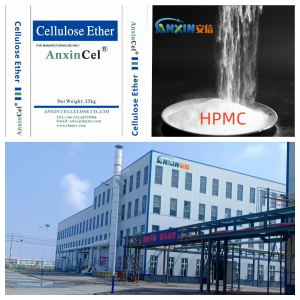Hydroxypropyl methylcellulose (HPMC) is a nonionic cellulose ether. As a key polymer additive in modern building materials systems, it is widely used in products such as tile adhesives, putty powders, self-leveling mortars, and thermal insulation mortars. With its excellent water retention, thickening, dispersing, and film-forming properties, HPMC is a key additive for improving material adhesion and workability.
1. One of the core functions of HPMC in building systems is to enhance adhesion. In tile adhesive or mortar formulations, HPMC forms a uniform polymer protective film during cement hydration, effectively delaying water evaporation and allowing cement particles to fully hydrate, thereby strengthening the interfacial adhesion between the cement and the substrate. Furthermore, HPMC’s film-forming properties create a flexible polymer film between the substrate and the adhesive layer, absorbing stress and improving the system’s crack resistance and durability. For low-water-absorption tiles or high-density substrates, the use of HPMC can significantly alleviate initial “slippage” during bonding, creating a stronger mechanical bond between the adhesive layer and the substrate, thereby enhancing overall bond strength.
2. HPMC’s water retention is a key factor in improving workability. In mortar systems, water is the foundation for cement hydration. However, during construction, water loss often occurs due to high ambient temperatures, high wind speeds, or high water absorption of the substrate. HPMC forms a stable colloidal network structure in the mortar, effectively locking in free water, extending the workability time and ensuring sufficient cement hydration, thereby improving the mortar’s workability and adaptability to construction. Especially in hot summer temperatures or dry environments, HPMC’s water retention can significantly improve common problems such as mortar cracking, powdering, and insufficient adhesion.
3. HPMC significantly improves the material’s rheological properties during construction. Due to its unique thickening effect, HPMC imparts an appropriate viscosity and thixotropy to the mortar, ensuring smooth application while preventing runniness and segregation. HPMC products with varying degrees of substitution and viscosities can be selected based on the application scenario: High-viscosity HPMC enhances the system’s anti-sagging properties and is suitable for vertical surface application; low-viscosity HPMC improves flowability and is suitable for self-leveling or sprayable materials. Choosing the right HPMC type and dosage can achieve the optimal balance between flowability, water retention, and adhesion.
4. HPMC also has a dispersing and stabilizing effect within the system. It effectively improves the dispersion of powder components and prevents particle agglomeration, thereby enhancing mortar uniformity and construction consistency. Furthermore, HPMC reduces porosity and increases density within the mortar layer, resulting in improved water resistance and freeze-thaw resistance after curing, further ensuring the long-term stability of the bondline.
Thanks to its unique chemical structure and physical properties, HPMC plays a multifaceted role in building mortars and tile adhesive systems. It not only enhances adhesion through excellent water retention and film-forming properties, but also optimizes construction performance through thickening and rheological adjustments. It is an irreplaceable functional additive in modern dry-mix mortar systems. With the development of green and high-performance building materials, the requirements for HPMC’s quality stability, dissolution rate, and construction adaptability are also increasing. The rational selection and precise application of high-quality HPMC will become a key link in improving the overall performance of building materials and the construction experience.
Post time: Oct-16-2025








